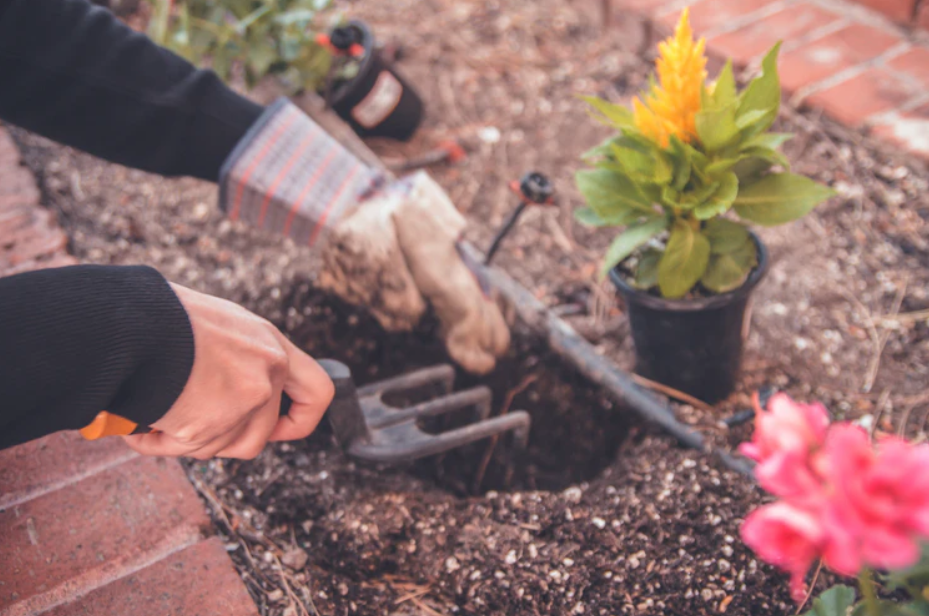This is a sponsored guest post.
Why grow a garden during fall or autumn? Isn’t it late already? Are there no other activities to enjoy during the fall season? These are the common questions of some people who find growing a garden during fall boring and dull. But what they are unaware of is that growing a fall garden is one of the sassiest things to do during fall. The reason is that developing a fall garden allows you to enjoy the garden at the most beautiful times of the year.

People are mistaken when they say that growing a fall garden is already late since the opposite is true. When you plant a fall garden, it means that you get to enjoy its produce even late in the year. Consequently, you’ll be able to save money and consume real delicious food during this season. Lastly, it’s easier to do since pests do not reveal themselves during this time. Hence, listed below are the five essential gardening preparations for fall.
1. Gear Up Your Soil
Of course, the fall season is the last season of the year. It is understandable that your soil during this time of the year is already entirely used up. Your garden has already been exhausted. But can you still use your soil for your fall garden? Of course! There’s no problem with that. What matters is the usefulness and profitability of the soil and not its exhaustion. But of course, you need to do something to utilize your soil or ground.
First is, you need to gear up your soil. Gearing up your soil means preparing your soil for the plants, vegetables, crops, and whatnot that you plan on planting in your fall garden. The reason is apparent. If you are using your garden all year round, then the previous vegetables or crops had taken up your soil’s nutrients for several months. It will affect your soil’s fertility. And if the effect is unfavorable, you will not be able to utilize your fall garden.
One solution to have is to clean your fall garden. Remove the unhealthy residues of the plants you’ve just harvested. Another is to replenish the nutrients that have been taken up by the previous plants. And one way of filling it is to add more compost to the soil. You may choose what kind of compost would that be. It may be vegetable waste, animal waste or manure, or any organic matter. That’s it. Your soil is already geared up.
2. Ready Your Appropriate Garden Tools
Before you begin planting your fall garden, it is a must to ready your appropriate garden tools. You cannot merely dive into it and begin growing your garden. So first, you need to have a decent pair of gardening gloves. You’ll be needing a thicker pair than usual since you will be uprooting former plants and holding other strong materials. Remember that there is not-so-pleasant stuff involved like manure that you have to be in close contact with. If what you are planting is cactus, you will need special cactus gloves that will keep the thorns out of your hands.
Second, don’t forget your ever indispensable spade because you will need it for digging, ground-breaking, and transporting soil from one location of your fall garden to another. Third, you’ll need your rake. Remember, it’s fall season already, and evidently, trees are getting naked because leaves are falling already. So, you need to clear these leaves up to avoid mess while cultivating your fall garden and damage to your lawn.
And lastly, you need your bulb planter. You’ll need one because it will make your life easier while gardening. The bulb planter is responsible for cutting out accurately sized holes for your vegetables and crops with the right amount of depth. So there you have it. Have these gardening tools checklist, and you’re good to go.
3. Choose Your Fall Plants
Choosing your fall plants is the most significant part in starting a fall garden since what would a garden be like without plants in it. Thus, it depends on you. You may want vegetables, flowers, clivia plant, or root crops. But do know that there are several cold-weather vegetables to choose from that are best suited for the fall season.
One example is beets. Beets are perfect for a fall garden because they have no long waiting time. It can survive a fall or autumn temperature and can even stay in your garden even after the fall freeze has passed. Further, it aesthetically adds beauty to your garden because of its leaves’ flamboyant colors that occur only during the fall season. But smaller clementine trees are also a great choice for colder months.
Since fall is fast approaching and the weather is turning cold, you need to choose the right plants to grow. This list of autumn veggies on Gardener’s Path so that it will be easier for you to begin your dream fall garden.
4. Protect Your Garden
Planting your desired plants in your garden is not the end of it all. It’s fall season, and there will be autumn or fall winds. Therefore, you need to place some tall structures around your plants to protect your plants or veggies from these winds. Also, you may even place fences around your entire garden to protect it from stray animals that recklessly pass through your garden or simply look for food.
Takeaway
Give yourself a favor. Follow these essential gardening preparations for fall will and experience the best and most fun activity you will be able to participate in during the fall season. Don’t be intimidated by the idea of creating a fall garden because, as you’ve seen here in the list, there are a myriad of fall garden vegetables that thrive in cool temperatures such as fall.




